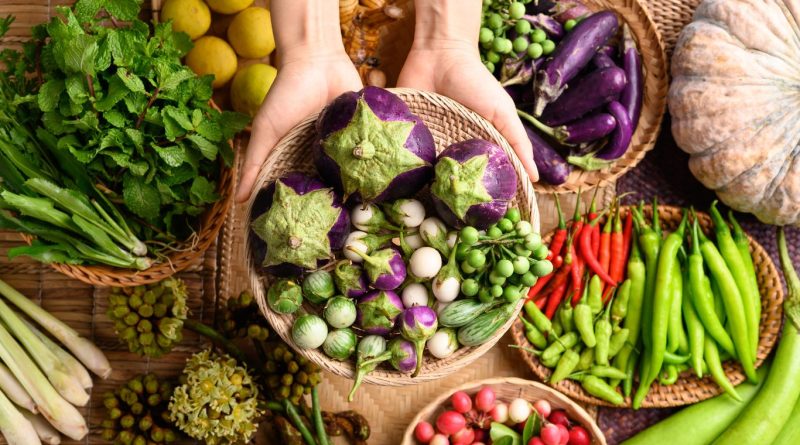8 Essential Practices for Sustainable Food Production
As concerns about climate change, food security, and environmental degradation grow, sustainable food practices are becoming essential for creating a healthier planet and population. Sustainable food production isn’t just about reducing harm but also restoring ecosystems, improving biodiversity, and ensuring food security for future generations. The following are eight key practices transforming sustainable food production, helping reduce environmental footprints and promote sustainability across the global food system.
1. Regenerative Agriculture
Regenerative agriculture is a holistic approach to farming that prioritizes restoring ecosystems and improving soil health. Unlike traditional agriculture, which often depletes soil nutrients and disrupts ecosystems, regenerative farming uses practices like no-till planting, cover cropping, and rotational grazing to rebuild soil fertility. These methods increase biodiversity, enhance water retention, and sequester carbon in the soil, which helps mitigate climate change. The symbiotic relationship between crops and livestock also makes regenerative farming more resilient to climate change and economic pressures.
By keeping soil intact and promoting biodiversity, regenerative agriculture is a crucial solution for achieving long-term food sustainability. This practice is gaining global momentum as farmers, consumers, and policymakers recognize the environmental and economic benefits it brings to the table.
2. Plant-Based Diets
Adopting a plant-based diet is one of the most effective ways individuals can reduce their environmental impact. Meat and dairy production accounts for a significant share of global greenhouse gas emissions, land use, and water consumption. By reducing the demand for animal products and increasing plant-based alternatives, we can significantly lower the agricultural sector’s carbon footprint.
In 2023, many fine-dining establishments, like Copenhagen’s Geranium, shifted to plant-forward menus, further promoting sustainable diets. Besides environmental benefits, plant-based foods offer health advantages, such as lowering the risks of cardiovascular diseases and obesity.
3. Upcycled Foods
One-third of all food produced globally goes to waste, contributing to 8% of human-caused greenhouse gas emissions. Upcycled foods aim to reduce waste by transforming byproducts into edible products. Companies like Upcycled Foods, for example, upcycle spent grain from breweries into nutritious flour, which is then used to create snack bars.
Upcycling prevents food waste from entering landfills and gives new life to materials that would otherwise be discarded.
4. Cultivated Meat
Cultivated meat, also known as lab-grown or cultured meat, offers a promising alternative to conventional meat production. Using animal cells cultivated in bioreactors, this method produces genuine meat without the environmental costs associated with raising livestock—such as methane emissions, land degradation, and water use.
Companies like Upside Foods are leading the charge, offering consumers a meat product that is kinder to the planet while maintaining the texture and taste of traditional meats.
5. Hyper-Local Sourcing
Hyper-local sourcing aims to reduce the distance between food production and consumption. By sourcing ingredients locally, food businesses reduce transportation emissions, support local economies, and offer fresher, more seasonal products. This approach can also include foraging, urban farming, and vertical gardens in city environments, making even urban settings more sustainable.
Consumers are increasingly aware of the provenance of their food and are choosing restaurants and food providers who prioritize local sourcing. This trend aligns with sustainability goals and helps strengthen community ties.
6. Edible Packaging
Edible packaging is an innovative solution designed to tackle the massive issue of plastic waste in the food industry. By using materials like seaweed, pea protein, or rice starch, companies can create packaging that is not only biodegradable but also edible. For instance, startups like Notpla are developing seaweed-based packaging.
Edible packaging is one way to create a circular economy in food production, where waste is minimized and the lifecycle of materials is extended.
7. Precision Agriculture
Precision agriculture uses advanced technologies, such as sensors, drones, and AI, to optimize farming practices. By measuring the precise needs of crops—such as water, nutrients, or pesticides—farmers can reduce waste, save resources, and improve crop yields.
This method not only increases efficiency but also minimizes the environmental impact of farming by reducing runoff and pesticide use. As the technology becomes more affordable, it is expected to play a crucial role in sustainable farming across the globe.
8. Biodiversity and Sustainable Fisheries
Biodiversity plays a vital role in food sustainability, helping ecosystems remain resilient and productive. Increasing the diversity of crops and livestock, such as using ancient grains like sorghum or millet, can improve soil health and protect against pests without the need for harmful chemicals.
In addition to land-based biodiversity, sustainable fisheries focus on harvesting fish in ways that maintain healthy populations and ecosystems. Techniques like pole-and-line fishing or using invasive species help promote ocean biodiversity while reducing overfishing.
Sustainable food production is critical in ensuring a healthier future for both people and the planet. By adopting these methods, we can reduce our environmental impact and create a more resilient global food system.
